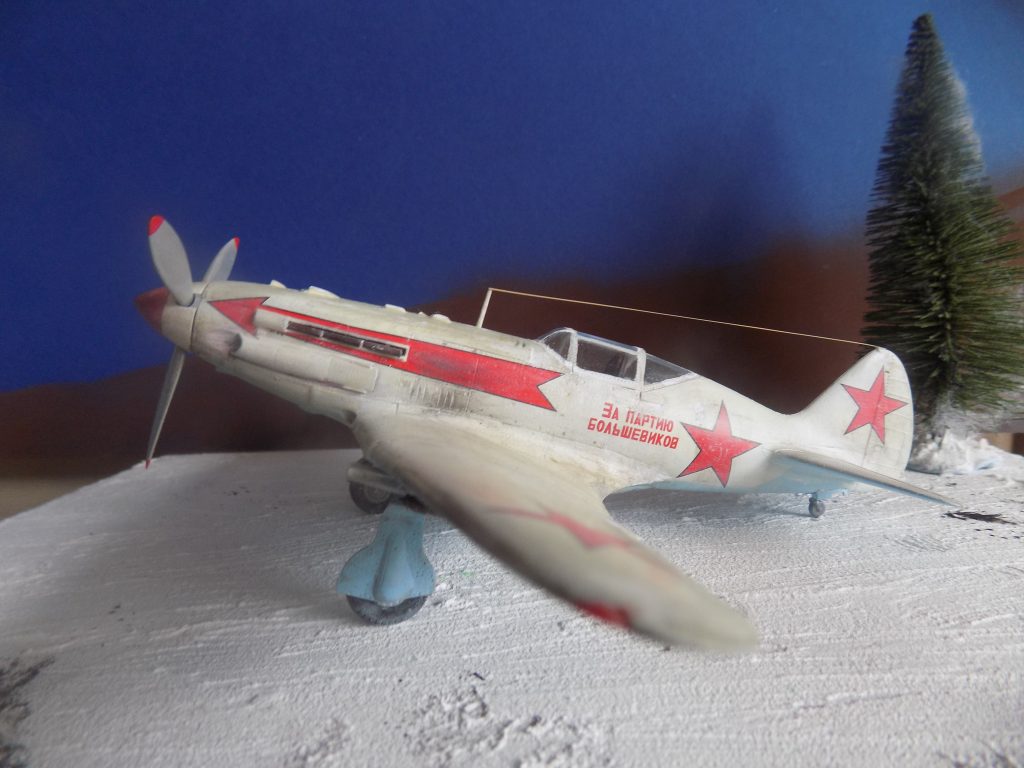
I cannot recall the manufacturer of this model but hey, it’s a beautiful looking aircraft and that’s all that matters! It’s sleek lines remind me of a thorough bred race horse. I have set it in a typical snow scene as it would have appeared in the spring of 1942. The red and white colours contrast very well.
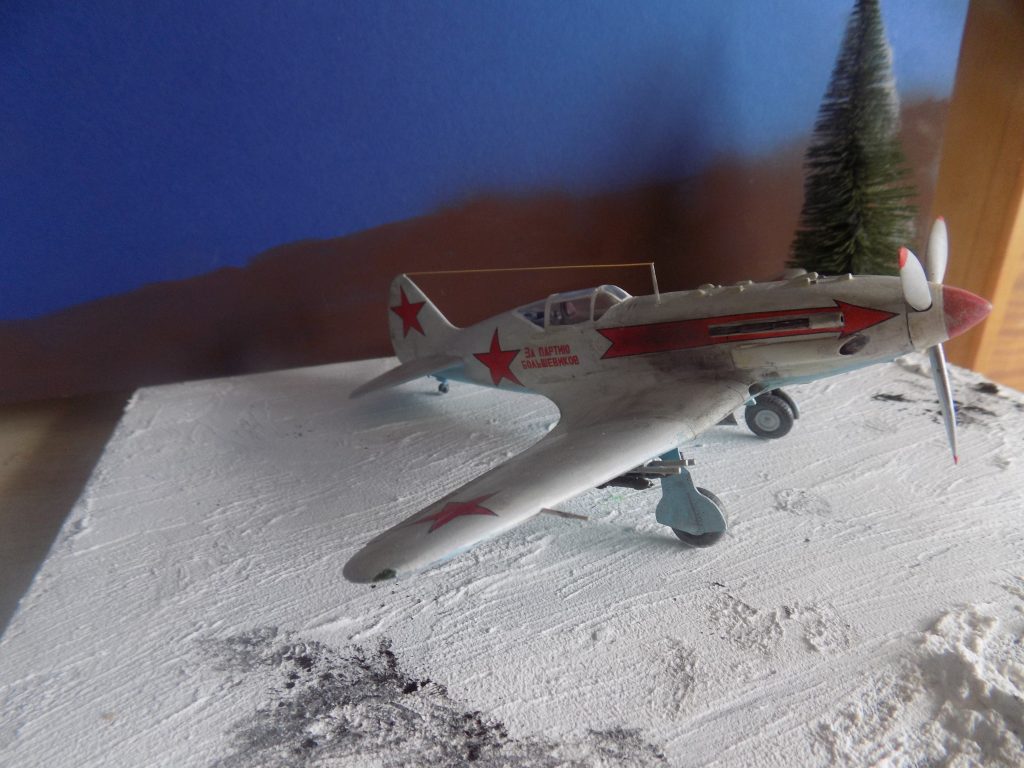
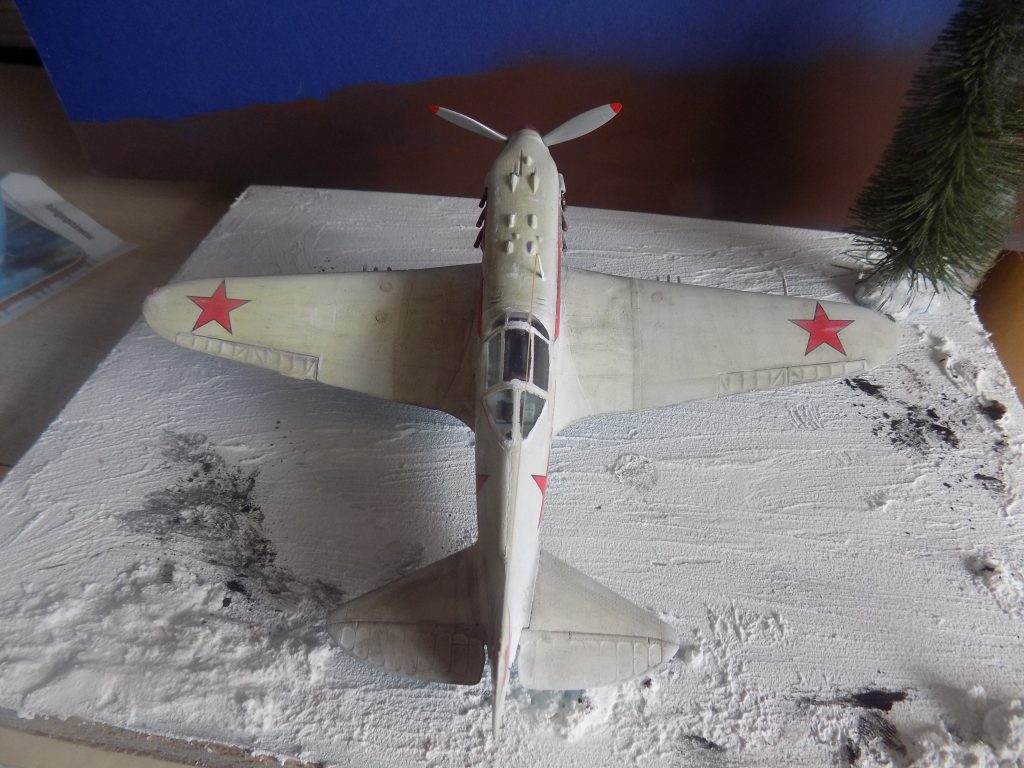
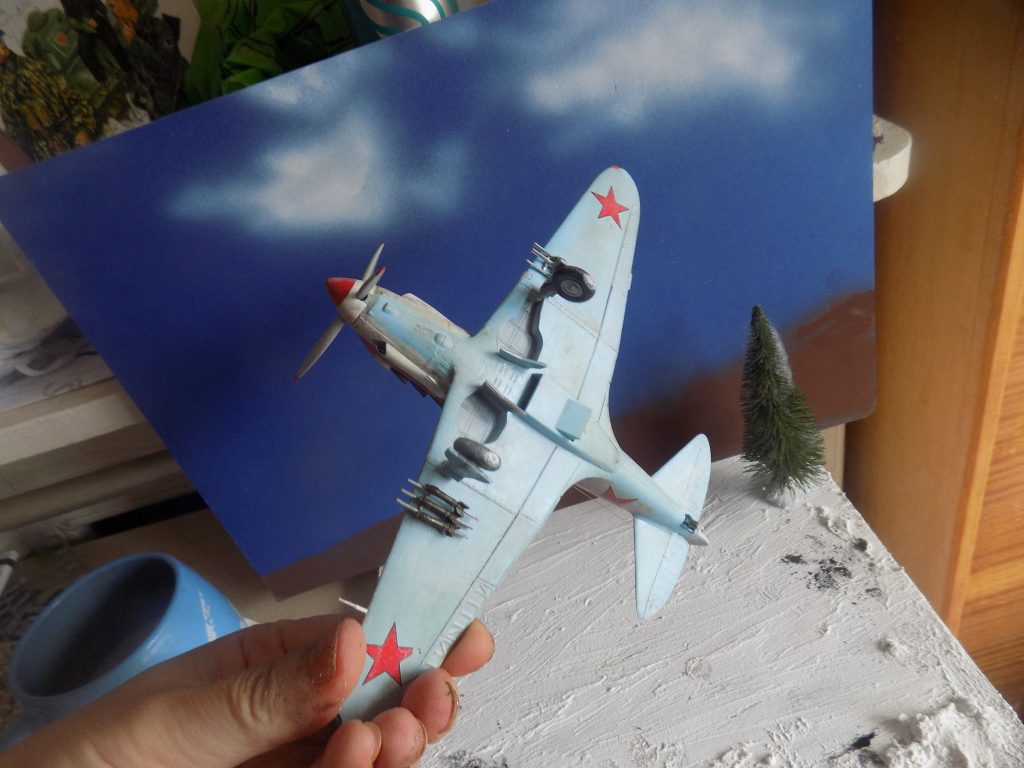
Although this aircraft was developed by Mikoyan and Gurevich, who were unknown aircraft engineers at the time, it was actually the brain child of N. Polikarpov who for some reason was taken off the project:
” In April 1940, the I-200 high altitude fighter designed by the Mikoyan/Gurevitch EDB made its maiden flight, in which it developed a high speed (up to 650 km/h at 7,000m). In terms of speed at altitudes of over 5,000m the I-200 left all its contemporary rivals far behind.
Series (i.e. mass) production of the new fighter began in January 1941. The first 100 production aircraft made were known as the MiG-1s. A later modification was designated the MiG-3. A total of 3,272 of these fighters were produced until in late December 1942 they were phased out of production because the plants making the AM-35A engines for the MiGs urgently had to switch to the production of the Am-38 engines for the Il-2 attack aircraft (i.e. Stormovik).
The MiG-3 was of little use as a front-line fighter, because at low altitudes it was outperformed by other fighters, and German fighters did not wage air combat at high altitudes. But the MiGs played an important role in the anti-aircraft defence system and, specifically, in defending Moscow against German air raids. Of the many enemy aircraft he shot out of the sky, famous Soviet ace pilot A.I. Pokryshin downed 10 while flying a MiG3.
There is a notion of repair-ability of an aircraft. In this respect the MiG-3 was an outstanding machine, for it remained in service long after production had been discontinued”.
From Russian Aircraft edited by Professor A.G. Bratukhin. Moscow ‘Mashinostroenie’ 1995.
The Mig-3 had several serious drawbacks. The canopy would not open during flight making it impossible for the pilot to bail out in an emergency, the cockpit was poorly ventilated, and worst of all it was difficult to control due to the rear alignment of the plane causing it to go into a tailspin easily from which it was difficult to pull out. This added to the fatigue of the pilot. Paradoxically, the Soviets ended up with far more MiG-3s than pilots who could fly these difficult machines.
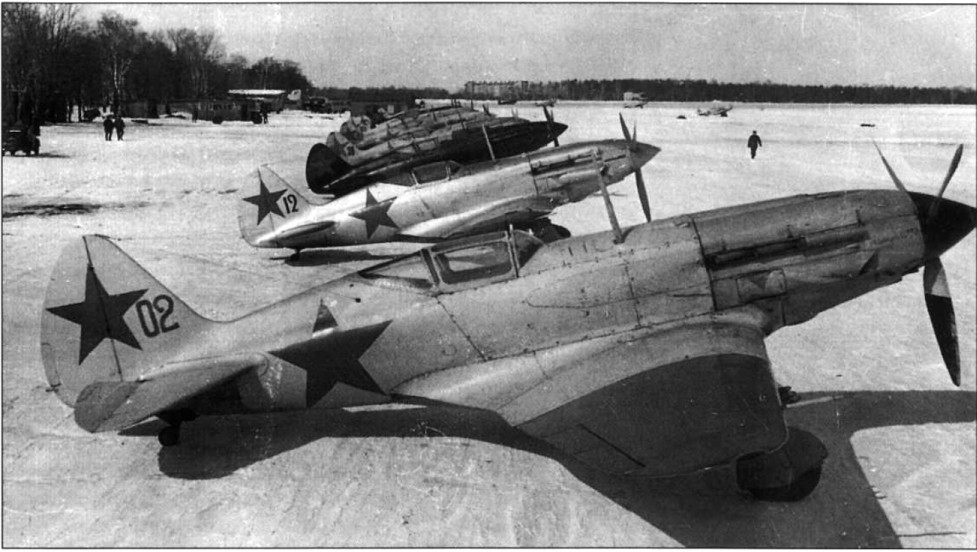
The footage on link below has a brief view of the above MiG-3 ‘For the Party of the Bolsheviks’:
https://tvzvezda.ru/news/opk/content/2020461041-8A1Ht.html/player/